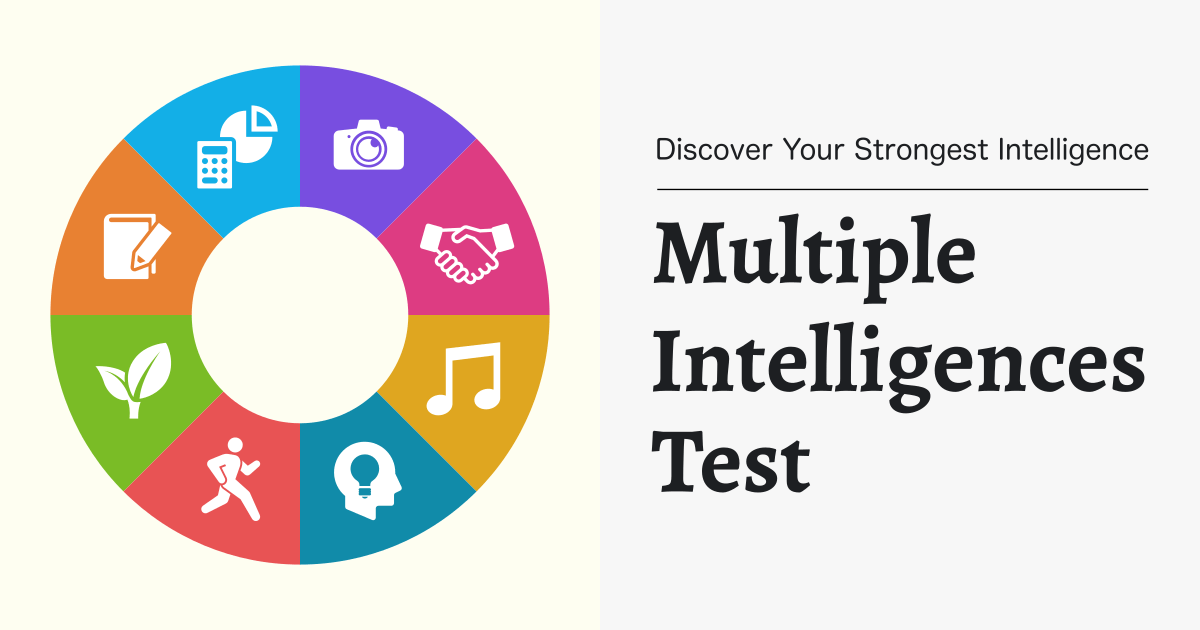
The Theory of Multiple Intelligences, proposed by psychologist Howard Gardner, suggests that intelligence is divided into eight distinct areas, and each person's unique combination of these areas defines their intellectual profile. By taking this test, you can discover your scores across these eight types of intelligence.
50questions3minutes
Proposed by Howard Gardner in 1983, the Theory of Multiple Intelligences posits that human intelligence is not a single, comprehensive ability but comprises several distinct intelligences. Unlike traditional intelligence tests that focus mainly on logical and linguistic abilities, this theory recognizes a variety of intelligences and aims to understand individuals' strengths comprehensively. Gardner initially proposed eight intelligences and later added a ninth, existential intelligence. This theory is utilized in education and career counseling to maximize individuals' potential, evaluating diverse abilities and promoting overall development, thereby expanding the conventional view of intelligence and human potential.
Linguistic intelligence refers to the ability to effectively use and understand language. This includes skills such as reading, writing, speaking, and listening. Professionals like writers, poets, journalists, and lawyers exhibit high linguistic intelligence. Individuals with strong linguistic intelligence possess a rich vocabulary, strong writing skills, and the ability to communicate persuasively. This intelligence is critical in education for enhancing reading comprehension, writing, and speech skills, and it forms the foundation for smooth communication with others.
Logical-mathematical intelligence pertains to the ability for logical thinking and solving mathematical problems. It is particularly prominent in mathematicians, scientists, and engineers. Individuals with high logical-mathematical intelligence excel at understanding abstract concepts, identifying patterns and relationships, and possess crucial skills for scientific inquiry, such as logical reasoning, understanding and manipulating mathematical equations, and designing and analyzing experiments. In education, this intelligence is emphasized in areas such as mathematical problem-solving, scientific inquiry, and programming, and it aids in logical decision-making and efficient planning in everyday life.
Visual-spatial intelligence involves the ability to understand and manipulate visual and spatial information. Architects, engineers, artists, and designers leverage this intelligence. Individuals with strong visual-spatial intelligence excel at interpreting maps, graphs, and diagrams, and can visualize and actualize visual images. This intelligence is used in problem-solving through spatial reasoning and can generate creative designs and artwork. Educationally, it is developed through activities like drafting, model design, and constructing in three dimensions.
Bodily-kinesthetic intelligence denotes the ability to skillfully use one's body. This intelligence is demonstrated by athletes, dancers, surgeons, and craftsmen. Individuals with high bodily-kinesthetic intelligence have excellent hand-eye coordination and full control over body movements, capable of performing complex movements smoothly. They excel in physical activities and learn best through hands-on experiences. In education, this intelligence is fostered through physical education, dance, and crafts, helping individuals understand and utilize body movements effectively.
Musical intelligence encompasses the ability to understand, create, and express music through awareness of rhythms, melodies, and harmonies. Musicians, composers, conductors, and performers use this intelligence. Individuals with high musical intelligence can discern subtle differences in sounds and express emotions through music, understanding musical structures and theories creatively. This intelligence develops through auditory learning, enhancing the ability to grasp musical patterns and rhythms. Educationally, it involves learning to play instruments, studying music theory, and composing music.
Interpersonal intelligence is the ability to understand and effectively communicate with others. It is utilized by counselors, teachers, salespeople, and leaders. Individuals with high interpersonal intelligence are empathetic and excel at teamwork and cooperation, building positive relationships through negotiation, coordination, and persuasive dialogue. This intelligence develops in social learning environments, enhancing the understanding of human relations and appropriate responses. In education, it is nurtured through group work and discussions, improving social skills.
Intrapersonal intelligence involves understanding and managing one's own emotions, beliefs, and goals. Philosophers, psychologists, religious leaders, and writers benefit from this intelligence. Individuals with high intrapersonal intelligence have deep self-awareness and can objectively analyze their behaviors and emotions. This intelligence facilitates personal growth through self-understanding and self-regulation. Educationally, it is developed through self-analysis, goal setting, and meditation activities, deepening self-awareness.
Naturalistic intelligence refers to the sensitivity and understanding of the natural environment and living beings. Biologists, environmental activists, farmers, and gardeners utilize this intelligence. Individuals with high naturalistic intelligence are skilled at observing and classifying animals, plants, and natural phenomena, sensitively detecting environmental changes and harmonizing with nature. This intelligence develops through interaction with nature, aiding in environmental conservation and understanding ecosystems. Educationally, it is enhanced through outdoor learning, biological observation, and environmental protection activities, deepening the understanding of the natural environment.